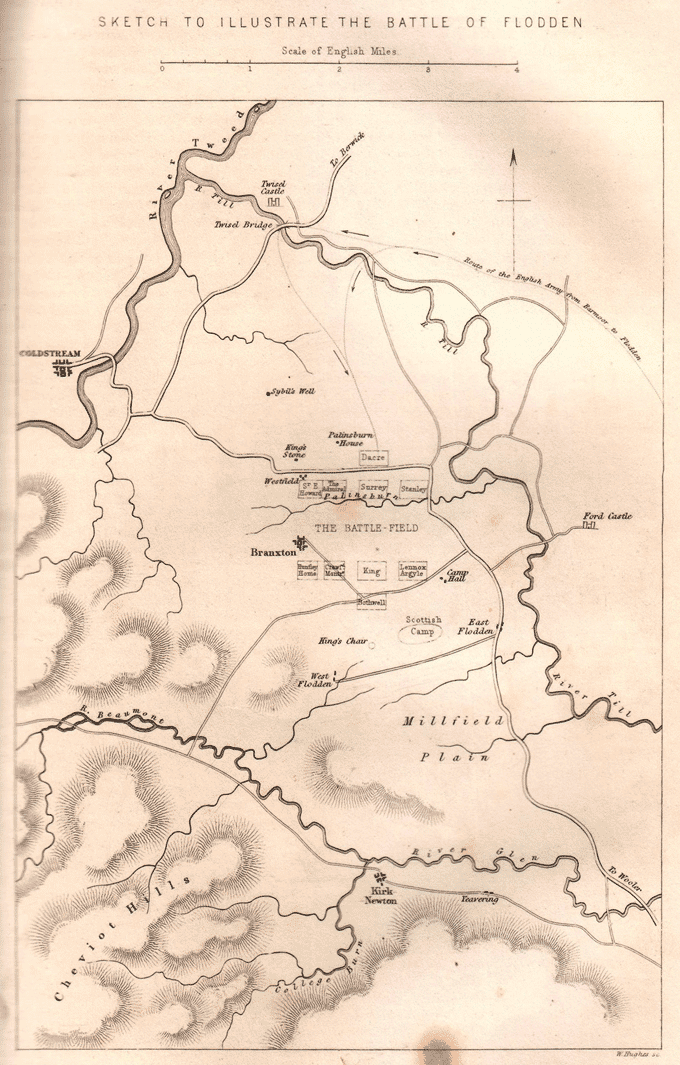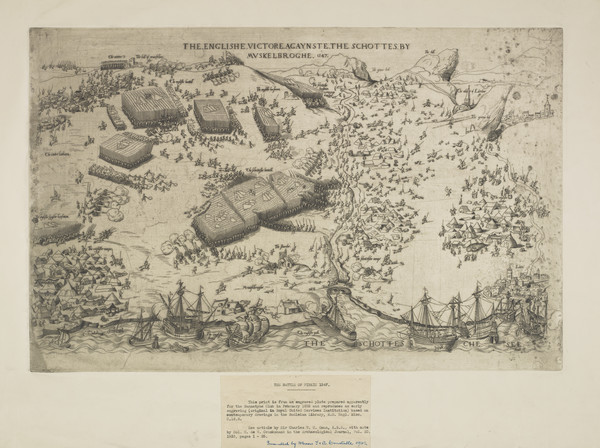OCR Specification focus:
‘Henry VII and Ayton (1497); the Battle of Flodden (1513); invasions and ‘rough-wooing’ under Henry VIII and Somerset.’
Introduction
The turbulent relationship between England and Scotland during the late fifteenth and early sixteenth centuries was shaped by diplomacy, war, dynastic rivalry, and fluctuating alliances across Europe.
The Treaty of Ayton (1497)
Henry VII inherited a precarious position in 1485, needing to consolidate his rule after the Wars of the Roses. Scotland, under James IV, provided refuge to pretenders like Perkin Warbeck, making northern relations highly unstable.
In 1496–97, James IV supported Warbeck’s invasion of England, provoking Henry VII into military action.
English forces crossed the border, and Scotland retaliated, but neither side gained a decisive advantage.
The stalemate, combined with financial strain and domestic pressures, encouraged both monarchs to negotiate.
The Treaty of Ayton (1497) established a seven-year truce, later extended by the marriage of James IV to Margaret Tudor in 1503.

The marriage procession of James IV and Margaret Tudor (1503) visually underscores the diplomatic consolidation that followed the Treaty of Ayton (1497). Source
This marriage alliance was significant:
It marked the first peace treaty between England and Scotland since 1328.
It laid the foundations for the eventual Union of the Crowns in 1603, when James VI of Scotland inherited the English throne.
DEFINITION
Marriage Alliance: A diplomatic strategy where dynastic unions were used to secure peace or alliances between rival powers.
Although peace held for a time, dynastic marriages could not erase the deeper strategic and political rivalries between the two kingdoms.
The Battle of Flodden (1513)
Henry VIII, unlike his cautious father, pursued a more militaristic foreign policy. When he invaded France in 1513, James IV of Scotland honoured the Auld Alliance with France by attacking northern England.
The English army, commanded by Thomas Howard, Earl of Surrey, confronted the Scots at Flodden Field on 9 September 1513.

Contemporary-style sketch map of the Battle of Flodden showing dispositions near Branxton, where James IV met defeat. Source
English forces used effective artillery and longbowmen against the Scottish pike formations.
The battle ended in disaster for Scotland: James IV was killed, along with much of the Scottish nobility.
Key consequences included:
A crushing blow to Scottish military strength.
A minority government under James V, leaving Scotland politically weakened.
Enhanced prestige for Henry VIII, despite limited gains in France.
Flodden was celebrated in England as a major victory, reinforcing the idea of English military superiority over Scotland.
The Rough-Wooing under Henry VIII
The ‘Rough-Wooing’ refers to a period of violent Anglo-Scottish conflict in the 1540s, sparked by Henry VIII’s desire to secure a marriage between his son, Edward VI, and the infant Mary, Queen of Scots.
The Treaty of Greenwich (1543) initially proposed the union, but Scottish resistance—fuelled by anti-English sentiment and French influence—led to its rejection.
Henry VIII responded with a campaign of raids and devastation along the Scottish Borders, burning towns such as Edinburgh and Leith.

Richard Lee’s plan associated with the 1544 burning of Edinburgh during the Rough-Wooing, depicting English entry and the Holyrood area. Source
This campaign was designed to force Scottish compliance through intimidation and destruction.
‘Rough-Wooing’: A term describing the violent attempt by England to secure a dynastic marriage with Scotland through military pressure and coercion (1543–1551).
The strategy proved counterproductive. Far from cowing Scotland, it deepened hostility and strengthened their reliance on France.
The Rough-Wooing under Somerset
After Henry VIII’s death in 1547, the policy was continued under Edward Seymour, Duke of Somerset, Lord Protector for the young Edward VI. Somerset sought to enforce the marriage agreement through further military campaigns.
The Battle of Pinkie (1547) was initially a decisive English victory, often called the last great medieval battle fought in Britain.

Engraved panorama of the Battle of Pinkie (1547), highlighting English formations and naval support off the Lothian coast. Source
English forces, with superior artillery and naval support, crushed the Scots.
However, the victory was undermined by England’s inability to secure lasting control.
Key outcomes:
Mary, Queen of Scots, was betrothed to the French Dauphin in 1548, strengthening the Franco-Scottish alliance.
French troops intervened in Scotland, limiting English advances.
The campaigns drained England financially and militarily, revealing the limitations of aggressive foreign policy.
The Rough-Wooing highlighted the fragility of England’s position: while capable of battlefield success, it struggled to impose diplomatic settlements on unwilling neighbours.
Broader Impacts of Anglo-Scottish Conflicts
These episodes illustrate how relations with Scotland were intertwined with broader European politics.
Ayton (1497): Demonstrated Henry VII’s pragmatism, using diplomacy and marriage to secure peace.
Flodden (1513): Showed the risks of the Auld Alliance and the destructive potential of Anglo-Scottish wars.
Rough-Wooing: Exposed the futility of coercive marriage diplomacy and the enduring strength of the Franco-Scottish connection.
Bullet-point summary of recurring themes:
Dynastic marriages were central instruments of policy but not always successful.
The Auld Alliance consistently threatened English security.
English military victories could not guarantee long-term political dominance.
Financial and strategic costs limited sustained conflict.
These developments framed Scotland not only as a northern threat but also as a critical link in Europe’s wider balance of power.
FAQ
James IV saw Perkin Warbeck as a useful tool to undermine Henry VII’s fragile rule. Supporting a Yorkist pretender provided leverage in negotiations and a potential claim to influence English politics.
Additionally, hosting Warbeck allowed James to assert Scottish independence from English dominance and reinforce the long-standing Franco-Scottish alignment against England.
Artillery was decisive. The English deployed lighter, more mobile guns capable of rapid fire from higher ground, while the Scots relied on heavier pieces that proved unwieldy.
This technological disadvantage, combined with poor positioning, left Scottish forces exposed to devastating firepower, contributing significantly to their heavy losses.
The treaty promised marriage between Edward VI and Mary, Queen of Scots, which some Scottish nobles supported as a way to avoid war.
However, widespread hostility to English influence, combined with the pro-French and pro-Catholic faction within Scotland, led to its rejection. Popular anti-English sentiment in Edinburgh also made the treaty politically untenable.
The English campaigns targeted key towns such as Edinburgh, Leith, and border settlements. Raids involved burning, looting, and destruction of agricultural land.
Civilians faced displacement and famine due to scorched earth tactics.
Repeated raids created long-term bitterness against England, reinforcing Scotland’s alignment with France.
Pinkie was the largest pitched battle between England and Scotland. It displayed modern combined-arms warfare, with coordination of infantry, cavalry, artillery, and naval support.
Despite the victory, England failed to capitalise strategically. The Scots secured French military assistance, and Mary, Queen of Scots, was moved to France for safety. The result emphasised the limitations of military success without effective diplomacy.
Practice Questions
Question 1 (2 marks)
Which Scottish king was killed at the Battle of Flodden in 1513?
Mark Scheme:
1 mark for identifying James IV.
1 additional mark for noting that he was the reigning monarch of Scotland at the time.
Question 2 (6 marks)
Explain two reasons why the Treaty of Ayton (1497) was significant in Anglo-Scottish relations.
Mark Scheme:
Up to 3 marks for each explained reason, maximum 6 marks.
Possible valid points include:
Marked the first peace treaty between England and Scotland since 1328 (1 mark for identification, 1–2 further marks for explanation of how this reduced hostility and cross-border raiding).
Secured a dynastic marriage between James IV and Margaret Tudor in 1503 (1 mark for identification, 1–2 further marks for explanation of its long-term impact, including paving the way for the Union of the Crowns).
Candidates may also discuss the reduction of Perkin Warbeck’s threat (1 mark for identification, 1–2 further marks for explanation of how Ayton weakened support for pretenders in Scotland).
To gain full marks, answers must provide two separate reasons with clear explanation of their significance.

